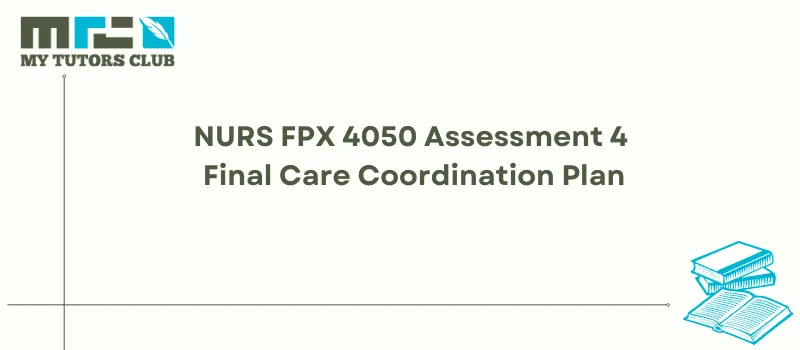Introduction:
Numerous specialists and professionals, including nursing staff, deliver a patient’s medical treatment via collaboration and care coordination. Nursing staff involvement in quality care is essential. Concern about psychological health has become global in scope. The relevant stakeholders, meanwhile, believe it to be unreliable.
Every medical clinic in every nation must have a care coordination strategy that includes mental illness services. Organizations for psychological health should also strive to promote self-care and build public health services. Interprofessional collaboration includes a strategy or plan for maintaining mental health to assist our patients in laying a solid base for comprehensive mental wellness. One of the tactics is to have professionals who can assist sick people in overcoming their difficulties embrace an alternate approach (Dessauvagie et al., 2020).
Patient-Centered Health Interventions for Mental Illnesses
A collaborative connection between medical practitioners and patients is built on patient-centered medical services. To help patients better comprehend their condition and therapy program, patient education is a typical approach in psychiatric care. A provider-centered strategy for educating patients may cause patients to become lethargic, hindering their recovery. For mental health conditions, rehabilitation and patient-oriented procedures are in accord with the point of view of participants being stressed more frequently. The opinions of medical experts on patient-centered psychiatric therapy are still little understood (Li et al., 2020).
Although keeping our emotional well-being is essential, some people can see the subject as controversial. This is why it is necessary to comprehend that the more our knowledge about psychiatric problems and treatments, the more inclined we are to request assistance, lead healthy lives, and prosper (Ma et al., 2019).
Timeline
The proposed intervention and approach will be implemented over about three months. The main points are listed below.
- Purchasing and transporting all required supplies for the intervention during the first 30 days.
- The second month is dedicated to coaching medical professionals, such as doctors, nursing staff, psychologists, and psychiatrists.
- The pilot scheme will be carried out in the third month.
Let us now discuss the health-related issues that should be addressed and treated with intervention strategies. Community programs are also essential in addressing these problems.
Ethical Choices for Patient-Centered Health Interference
There is currently no commonly accepted explanation or presentation of patient-centered management. The vagueness of the phrase has been raised several times; for instance, research has said that the patient-centered care goal is up for debate and that numerous models have been proposed. Notwithstanding this heterogeneity, a few recurring ethical concepts define and explain the idea. The literature has extensively discussed these and are often regarded as essential components of patient-centered therapy. They are varied enough to act as a suitable method for separating distinct aspects of patient-centered care, even when there is considerable overlap (van Os et al., 2019).
The primary of these subjects is holism. The concept of “person-centered care” has its roots in a holistic perspective, which suggests that people should be seen as whole bio-psychosocial beings. Holism is a term that may be used in a variety of circumstances. Occasionally, it is hard to tell exactly how it is being used. It has consistently urged the provider to monitor the patient’s social and psychological well-being closely and generally acknowledge medical health.
The psychological bond between the nurses and the mentally ill patients, which goes further than the more restrained meaningful interactions that have historically been the custom, leads to the next ethical choice. That is because the patient’s narrative provides the nurses with detailed, usually confidential data that assists professionals in understanding the patient; these interactions are typically built on it (Waldmann et al., 2019).
The third subject is joint judgment. This suggests that the choice of the patient’s treatment is made in consultation with the psychiatrist, the caregivers, and the patient. It is often described as a framework for decision-making that resides halfway between the existing educated patient modeling approach and conventional medical paternalism (Olson et al., 2021). When these guidelines are implemented, the clinical situation and the nurse’s productivity increase. These protocols respond to any scenario a nurse can encounter.
Health Policy Implications for the Coordination of Care
The Behavioral Health Evolution Journal claims that effective, scientifically based initiatives and regulations for psychological health must meet a set of requirements. The best way to proceed is an articulated approach. This suggests that it is straightforward to replicate and that the procedures should be specific. The approach should reflect the client’s goals, show efficiency, and uphold social norms. All groups should be able to receive the therapies and be adaptable sufficiently for them to do so (van Os et al., 2019).
Care coordination includes a strategy for controlling their mental state to assist patients in laying a solid base for general psychological health. Having nurses around who can support individuals throughout their problems is one tactic. His self-worth and self-respect should be prioritized, and self-criticism should be avoided. The individual is more interested in saving for an unforeseeable future than in providing necessities. As a result, our approach must be to have professionals counsel clients to focus more on setting achievable objectives for their therapy (Seven et al., 2020).
NURS FPX 4050 Assessment 4 Final Care Coordination Plan
Many laws and programs support individuals in leading psychologically stable lives. Here, a handful are mentioned.
- College students with psychological issues may get support and outreach resources through Active Minds, which operates more than 450 organizations nationwide. They provide treatments that may be used on patients with various diseases and mental health issues.
- The American Foundation for Suicide Prevention is a nonprofit organization that provides suicide awareness advice and education. They always have a researcher on call, which benefits anybody contemplating suicide.
- The Anxiety and Depression Association of America (ADAA) experts believe instruction and investigation to advance understanding of anxiety, stress, and related conditions. Anybody may profit from them (Sampasa-Kanyinga et al., 2020).
Care Coordinator Priorities to Discuss the Plan
Giving patient-centered therapy is at the core of nursing’s arts and science. It should not be shocking that nursing staff spend significantly more time with individuals than most medical professionals. Improving the level of care provided for patients suffering from mental health issues is a significant task for nursing staff. It is commonly recognized that nurses can communicate with patients. Clinicians often make their first encounters with patients. This means they are in a distinct situation to spot mental health problems. They could provide people with the compassion necessary to make access to treatment more accessible.
Need for Changes to the Plan
It is critical to understand that general practice visits often last far less time than individual therapy and that most family doctors have not had proper training in psychodynamic therapy, like cognitive behavioral therapies. While it is not always necessary, the primary care doctor may help a patient find a psychiatrist if they need to see one (Ma et al., 2019).
Patient assistance is included in the nursing staff’s ethical guidelines. Patients trust nurses to advocate on their behalf at the clinic. Moreover, when decisions impact how persons with psychiatric conditions are addressed, caregivers should act as advocacy organizers (Li et al., 2020). For caregivers to be efficient clinical communicators, any nurse practitioner must think critically and do proper research, particularly in mental health. Organizations see this information as essential to improving the patient experience because it empowers individuals to make well-informed decisions (Henriksen et al., 2019).
NURS FPX 4050 Assessment 4 Final Care Coordination Plan
Researchers examined how senior executives’ support influences nurses’ engagement with projects in a research of 120 U.S. health facilities using a combination of interviews and questionnaires. They discovered that health professionals might help with implementation by telling nurses immediately that the project is a priority for the firm and by allocating funds, human resources, training, and performance evaluations in favor of the program. Top managers may also support high-quality initiatives by persuading nurses and other healthcare professionals that implementing the innovation is feasible, given the available resources (Seven et al., 2020).
When planning the implementation of guidelines and practice change, they said that “relational components of administrative and clinical leadership positions require more attention.” The significance of leadership support for individuals tasked with implementing quality improvement initiatives cannot be emphasized. These two recent research findings may aid top management and hospital administrators in implementing initiatives by helping them understand what assistance is required and how to arrange communication to ensure it is supplied (Castaldelli-Maia et al., 2019a).
Comparison of Learning Session Content with Practices
The consequences of medical decisions may be extensive. As a result, nurses and patients must be as knowledgeable as necessary. This is extremely important when developing strategies for the treatment of schizophrenia. Nevertheless, research suggests that individuals with schizophrenia benefit significantly from knowledge about their illness (Dessauvagie et al., 2020). According to reports, just 50% of people regularly follow the directions on their medicines. More people realize the necessity for a holistic approach to taking drugs (Castaldelli-Maia et al., 2019b).
Typically, a psychodynamic psychotherapy group meets twice a week for an hour, has four to twenty sessions total, and seems to last for an hour. Nevertheless, depending on the psychoeducational approach, the individuals’ needs, and the facility’s nature, this pattern may change dramatically (Castaldelli-Maia et al., 2019a).
Alignment of Teaching Sessions to the Healthy People 2030
About half of all Americans will experience a psychiatric illness at some time in their life, according to Healthy People 2030. All genders, races, and ethnicities are affected by mental diseases. However, these communities are adversely impacted.
Furthermore, there are links between both mental and physical fitness. Similarly, people may find it more challenging to get care for their mental diseases due to medical health concerns (Bjørlykhaug et al., 2021). Expanded mental health screening might help individuals get the treatment they require. Because of this, we must constantly coordinate our methods with those previously proven effective (Åkesdotter et al., 2019).
Conclusion
With the help of this cohesive strategy, nursing staff can comprehend the patient’s issues and discover how to treat them. Caregiving for people with psychiatric illnesses is difficult due to their extreme sensitivity to their environment and outside influences. Any little mistake made by the emergency caregiver could function as a trigger, causing the patient’s signs to worsen. Nursing staff must use tact while interacting with and contacting patients to avoid disturbing them.
Nursing staff should have a strategy in place in the case of a severe assault to lessen discomfort and avert fatal results. Given the opportunity to participate in health awareness workshops, patients feel considerably better about themselves since they understand more about their difficulties and that more others share them. After enrolling, nursing staff rapidly learn the techniques required to cope with patients suffering from a variety of ailments and how to control their attitudes during and before treatment.
References
Åkesdotter, C., Kenttä, G., Eloranta, S., & Franck, J. (2019). The prevalence of Mental Health Problems in elite athletes. Journal of Science and Medicine in Sport, 23(4).
Bjørlykhaug, K. I., Karlsson, B., Hesook, S. K., & Kleppe, L. C. (2021). Social support and recovery from mental health problems: A scoping review. Nordic Social Work Research, 1–32.
Castaldelli-Maia, J. M., Lewis, T., Marques dos Santos, N., Picon, F., Kadhum, M., Farrell, S. M., Molodynski, A., & Ventriglio, A. (2019a). Stressors, psychological distress, and mental health problems amongst Brazilian medical students. International Review of Psychiatry, 31(7-8), 603–607.
Castaldelli-Maia, J. M., Lewis, T., Marques dos Santos, N., Picon, F., Kadhum, M., Farrell, S. M., Molodynski, A., & Ventriglio, A. (2019b). Stressors, psychological distress, and mental health problems amongst Brazilian medical students. International Review of Psychiatry, 31(7-8), 603–607.
Dessauvagie, A. S., Jörns-Presentati, A., Napp, A.-K. ., Stein, D. J., Jonker, D., Breet, E., Charles, W., Swart, R. L., Lahti, M., Suliman, S., Jansen, R., Heuvel, L. L. van den, Seedat, S., & Groen, G. (2020). The prevalence of mental health problems in sub-Saharan adolescents living with HIV: A systematic review. Global Mental Health, 7.
Henriksen, K., Schinke, R., Moesch, K., McCann, S., Parham, William D., Larsen, C. H., & Terry, P. (2019). Consensus statement on improving the mental health of high-performance athletes. International Journal of Sport and Exercise Psychology, 18(5), 1–8.
Li, J.-B., Yang, A., Dou, K., & Cheung, R. Y. M. (2020). Self-control moderates the association between the perceived severity of coronavirus disease 2019 (COVID-19) and mental health problems among the Ce public. International Journal of Environmental Research and Public Health, 17(13), 4820.
Ma, R., Mann, F., Wang, J., Lloyd-Evans, B., Terhune, J., Al-Shihabi, A., & Johnson, S. (2019). The effectiveness of interventions for reducing subjective and objective social isolation among people with mental health problems: A systematic review. Social Psychiatry and Psychiatric Epidemiology, 55.
Sampasa-Kanyinga, H., Colman, I., Goldfield, G. S., Janssen, I., Wang, J., Podinic, I., Tremblay, M. S., Saunders, T. J., Sampson, M., & Chaput, J.-P. (2020). Combinations of physical activity, sedentary time, and sleep duration and their associations with depressive symptoms and other mental health problems in children and adolescents: a systematic review. International Journal of Behavioral Nutrition and Physical Activity, 17(1).
Seven, Ü. S., Stoll, M., Dubbert, D., Kohls, C., Werner, P., & Kalbe, E. (2020). Perception, attitudes, and experiences regarding mental health problems and web-based mental health information amongst young people with and without migration background in Germany. A qualitative study. International Journal of Environmental Research and Public Health, 18(1), 81.
van Os, J., Guloksuz, S., Vijn, T. W., Hafkenscheid, A., & Delespaul, P. (2019). The evidence-based group-level symptom-reduction model as the organizing principle for mental health care: time for change? World Psychiatry, 18(1), 88–96.
Waldmann, T., Staiger, T., Oexle, N., & Rüsch, N. (2019). Mental health literacy and help-seeking among unemployed people with mental health problems. Journal of Mental Health, 1–7.




